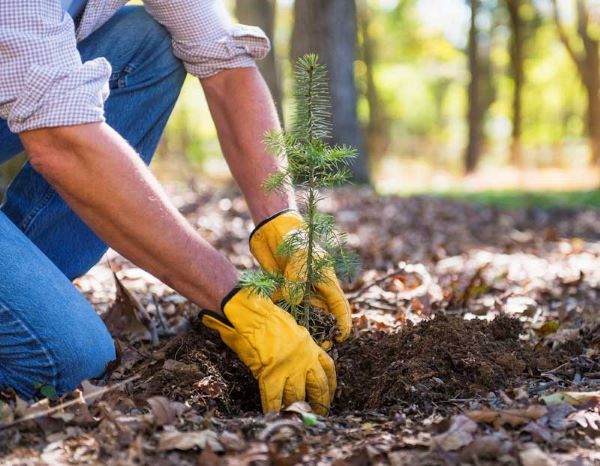Safe Gardening

Safe Gardening
Avid gardeners tout the benefits of gardening, which are many. It’s easy to forget gardening also can be hazardous, at least until the gardener is in a doctor’s office with an injury or condition that needs professional support. According to the Consumer Product Safety Commission (CPSC), emergency rooms treat more than 400,000 outdoor garden tool-related accidents each year. With proper safety techniques, you can stay away from the hospital and avoid becoming a statistic. We will run a series of Safe Gardening information through the season.
Protect Your Hands
1. WEAR GLOVES WHEN WORKING OUTSIDE
Wearing the proper gloves will not only reduce blistering but will also protect your skin from fertilizers, pesticides, bacteria and fungus that live in the soil. When exposed to soil, even the smallest cut runs the risk of developing into a major hand infection. Leather gloves offer protection from thorny objects and poison ivy, snake, rodent and insect bites, and other skin irritants in the garden. Gloves also prevent sun damage and fingernail damage.
2. AVOID PROLONGED REPETITIVE MOTIONS
Unless you are used to the activity, repetitive motions such as digging, raking, trimming hedges, pruning bushes or planting bulbs may cause skin, tendon or nerve irritation. Make sure your gardening activities are varied and tasks are rotated every 15 minutes with a brief rest in-between so that the same muscles are not used over and over again.
3. USE TOOLS, NOT YOUR HANDS
Use a hand shovel or rake rather than your hand for digging. Sharp objects and debris buried in the soil may cut you. If possible, remove objects from the work area before beginning the task to avoid causing damage to you or your tools.
4. USE THE RIGHT TOOL FOR THE RIGHT JOB
Avoid accidents by using tools for their intended purposes. Other important tool tips:
- When purchasing pruners, loppers or shears, look for brands featuring a safety lock.
- Avoid products with form-fitting handles. These tools only fit one size of hand perfectly. If your hand is too large or too small, it will put more stress on your hand.
- Always follow the manufacturers’ instructions for the tool.
- Keep sharp tools away from children at all times.
- Always unplug electrical tools and disconnect spark plug wires on gasoline-powered tools when not in use.
CHECK YOUR POSTURE
“Posture” refers not only to your whole body position but also to the angle of your wrist while using hand tools. Grip strength is at its maximum when the wrist is in a relaxed or neutral position. Studies have shown that people lose up to 25% of their grip strength when their wrist is bent.
WHAT TO DO IN CASE OF INJURY
- If you cut your finger or hand, bleeding from minor cuts will often stop by applying direct pressure to the cut with a clean cloth. Visit the emergency room if:
– Continuous pressure does not stop the bleeding after 15 minutes.
– You notice persistent numbness or tingling in the fingertip or have trouble moving the finger.
– You are unsure of your tetanus immunization status.
– You are unable to thoroughly clean the wound by rinsing with a mild soap and plenty of clean water.
Remember to safely enjoy the health benefits of gardening by using your hands and tools wisely.
https://www.assh.org/handcare/safety/gardening
